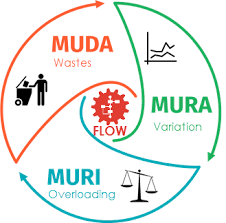
Reduce waste in software development with 3M model: Muda, Mura, Muri
Last updated: October 20, 2025 Read in fullscreen view
- 02 Nov 2023
 Unlocking Success with The Amoeba Management Model: Key Lessons, Pros & Cons, and Finding the Perfect Fit 160/687
Unlocking Success with The Amoeba Management Model: Key Lessons, Pros & Cons, and Finding the Perfect Fit 160/687 - 10 Nov 2021
 5S methodology - the SECRET to Japanese SUCCESS 134/1726
5S methodology - the SECRET to Japanese SUCCESS 134/1726 - 09 Sep 2022
 Kaizen, Kaikaku and Kakushin – what’s the difference? 82/2897
Kaizen, Kaikaku and Kakushin – what’s the difference? 82/2897 - 24 Nov 2022
 Genba Genbutsu Genjitsu (3Gs), (Go to the Genba & see for yourself!) 69/2904
Genba Genbutsu Genjitsu (3Gs), (Go to the Genba & see for yourself!) 69/2904 - 01 Dec 2023
 What is Amoeba Management? 59/897
What is Amoeba Management? 59/897 - 01 Apr 2022
 Ishikawa (fishbone) diagram in software project management 37/3034
Ishikawa (fishbone) diagram in software project management 37/3034 - 10 Apr 2022
 Agile self-organizing teams: What are they? How do they work? 28/435
Agile self-organizing teams: What are they? How do they work? 28/435 - 18 Oct 2020
 How to use the "Knowns" and "Unknowns" technique to manage assumptions 21/989
How to use the "Knowns" and "Unknowns" technique to manage assumptions 21/989 - 05 Oct 2025
 The New Facebook Algorithm: A Paradigm Shift in Content Discovery 19/46
The New Facebook Algorithm: A Paradigm Shift in Content Discovery 19/46 - 21 May 2022
 "Fail Fast, Fail Often, Fail Forward" is the answer to Agile practices of software success 18/941
"Fail Fast, Fail Often, Fail Forward" is the answer to Agile practices of software success 18/941 - 15 Apr 2022
 Total Quality Management (TQM) - Japanese-style management approach to quality improvement. 17/628
Total Quality Management (TQM) - Japanese-style management approach to quality improvement. 17/628 - 04 Mar 2024
 Tree Ring Management: Take the Long Term View and Grow Your Business Slowly 15/374
Tree Ring Management: Take the Long Term View and Grow Your Business Slowly 15/374 - 27 Aug 2022
 Kaizen - Culture of Continuous Improvement and Lean Thinking 13/705
Kaizen - Culture of Continuous Improvement and Lean Thinking 13/705 - 01 Oct 2020
 Fail fast, learn faster with Agile methodology 13/973
Fail fast, learn faster with Agile methodology 13/973 - 09 Sep 2022
 What is 5 Whys (Five Whys)? 12/861
What is 5 Whys (Five Whys)? 12/861 - 13 Jul 2022
 Applying the business mantra "HORENSO" to Achieve 360-degree Communication 12/813
Applying the business mantra "HORENSO" to Achieve 360-degree Communication 12/813 - 02 Feb 2022
 Yokoten: Best Practice Sharing from a success 12/1284
Yokoten: Best Practice Sharing from a success 12/1284 - 03 Nov 2023
 Why Is Billable Viable Product An Alternative To Minimum Viable Product? 12/165
Why Is Billable Viable Product An Alternative To Minimum Viable Product? 12/165 - 03 Jan 2024
 What is the Ringi process? 12/876
What is the Ringi process? 12/876 - 12 Dec 2024
 Danshari: A Japanese Minimalist Philosophy for Cleaner Code and Leaner IT Operations 10/22
Danshari: A Japanese Minimalist Philosophy for Cleaner Code and Leaner IT Operations 10/22 - 01 Mar 2022
 The Toyota Way Management Principles 10/682
The Toyota Way Management Principles 10/682 - 12 Oct 2022
 14 Common Reasons Software Projects Fail (And How To Avoid Them) 10/504
14 Common Reasons Software Projects Fail (And How To Avoid Them) 10/504 - 29 Aug 2022
 Difference between Kaizen and Innovation 9/793
Difference between Kaizen and Innovation 9/793 - 30 Jul 2024
 The Future of IT Consulting: Trends and Opportunities 8/131
The Future of IT Consulting: Trends and Opportunities 8/131 - 18 Jul 2024
 The 8 Best ways to Innovate your SAAS Business Model in 2024 8/205
The 8 Best ways to Innovate your SAAS Business Model in 2024 8/205 - 15 Jul 2022
 Hansei Methodology: Continuously Engaging People in Improvement 8/646
Hansei Methodology: Continuously Engaging People in Improvement 8/646 - 10 Nov 2022
 Poor Code Indicators and How to Improve Your Code? 7/213
Poor Code Indicators and How to Improve Your Code? 7/213 - 19 Oct 2021
 Is gold plating good or bad in project management? 7/754
Is gold plating good or bad in project management? 7/754 - 20 Jan 2022
 TIGO Self-Organization Practice: Change Management Workflow 6/430
TIGO Self-Organization Practice: Change Management Workflow 6/430 - 13 Oct 2021
 Outsourcing Software Development: MVP, Proof of Concept (POC) and Prototyping. Which is better? 6/424
Outsourcing Software Development: MVP, Proof of Concept (POC) and Prototyping. Which is better? 6/424 - 08 Nov 2022
 4 tips for meeting tough deadlines when outsourcing projects to software vendor 6/254
4 tips for meeting tough deadlines when outsourcing projects to software vendor 6/254 - 06 Feb 2021
 Why fail fast and learn fast? 6/375
Why fail fast and learn fast? 6/375 - 28 Jul 2022
 POC, Prototypes, Pilots and MVP: What Are the Differences? 6/606
POC, Prototypes, Pilots and MVP: What Are the Differences? 6/606 - 01 Sep 2022
 Facts Chart: Why Do Software Projects Fail? 6/540
Facts Chart: Why Do Software Projects Fail? 6/540 - 01 Mar 2023
 Bug Prioritization - What are the 5 levels of priority? 6/207
Bug Prioritization - What are the 5 levels of priority? 6/207 - 27 Jul 2024
 Positive Psychology in the Digital Age: Future Directions and Technologies 6/337
Positive Psychology in the Digital Age: Future Directions and Technologies 6/337 - 07 Oct 2025
 Case Study: Using the “Messaging House” Framework to Build a Digital Transformation Roadmap 5/45
Case Study: Using the “Messaging House” Framework to Build a Digital Transformation Roadmap 5/45 - 11 Oct 2022
 Why choose Billable Viable Product (BVP) over Minimum Viable Product (MVP) 5/315
Why choose Billable Viable Product (BVP) over Minimum Viable Product (MVP) 5/315 - 19 Sep 2022
 Jidoka in Software Development and Odoo ERP/MRP 5/466
Jidoka in Software Development and Odoo ERP/MRP 5/466 - 20 Nov 2022
 Agile working method in software and football 5/323
Agile working method in software and football 5/323 - 31 Aug 2022
 What are the best practices for software contract negotiations? 5/215
What are the best practices for software contract negotiations? 5/215 - 16 Jun 2022
 Rapid Application Development (RAD): Pros and Cons 5/800
Rapid Application Development (RAD): Pros and Cons 5/800 - 05 Mar 2021
 How do you minimize risks when you outsource software development? 5/317
How do you minimize risks when you outsource software development? 5/317 - 14 Oct 2021
 Advantages and Disadvantages of Time and Material Contract (T&M) 4/789
Advantages and Disadvantages of Time and Material Contract (T&M) 4/789 - 06 Mar 2021
 4 things you need to do before getting an accurate quote for your software development 4/615
4 things you need to do before getting an accurate quote for your software development 4/615 - 12 Dec 2021
 Zero Sum Games Agile vs. Waterfall Project Management Methods 4/374
Zero Sum Games Agile vs. Waterfall Project Management Methods 4/374 - 06 Jun 2022
 HEIJUNKA: The art of leveling production 4/481
HEIJUNKA: The art of leveling production 4/481 - 04 Oct 2022
 Which ERP implementation strategy is right for your business? 4/278
Which ERP implementation strategy is right for your business? 4/278 - 01 Jan 2024
 The pros and cons of the Centralized Enterprise Automation Operating model 4/165
The pros and cons of the Centralized Enterprise Automation Operating model 4/165 - 01 Dec 2023
 Laws of Project Management 3/249
Laws of Project Management 3/249 - 09 Oct 2024
 Short-Form Video Advertising: The Secret to Captivating Your Audience 3/107
Short-Form Video Advertising: The Secret to Captivating Your Audience 3/107 - 27 Feb 2025
 How AI Agents are Changing Software Development? 3/170
How AI Agents are Changing Software Development? 3/170 - 05 Sep 2023
 The Cold Start Problem: How to Start and Scale Network Effects 3/167
The Cold Start Problem: How to Start and Scale Network Effects 3/167 - 18 Aug 2022
 What are the consequences of poor requirements with software development projects? 3/242
What are the consequences of poor requirements with software development projects? 3/242 - 16 Feb 2021
 Choose Outsourcing for Your Non Disclosure Agreement (NDA) 3/150
Choose Outsourcing for Your Non Disclosure Agreement (NDA) 3/150 - 09 Mar 2022
 Consultant Implementation Pricing 3/184
Consultant Implementation Pricing 3/184 - 16 Apr 2021
 Insightful Business Technology Consulting at TIGO 3/376
Insightful Business Technology Consulting at TIGO 3/376 - 31 Oct 2021
 Tips to Fail Fast With Outsourcing 3/375
Tips to Fail Fast With Outsourcing 3/375 - 20 Jan 2021
 Fail early, fail often, fail cheap, fail safe but always fail forward 3/688
Fail early, fail often, fail cheap, fail safe but always fail forward 3/688 - 18 Jul 2021
 How To Ramp Up An Offshore Software Development Team Quickly 3/516
How To Ramp Up An Offshore Software Development Team Quickly 3/516 - 08 Oct 2022
 KPI - The New Leadership 3/557
KPI - The New Leadership 3/557 - 12 Oct 2020
 The Agile Manifesto - Principle #8 2/447
The Agile Manifesto - Principle #8 2/447 - 07 Oct 2020
 How To Manage Expectations at Work (and Why It's Important) 2/266
How To Manage Expectations at Work (and Why It's Important) 2/266 - 04 Oct 2021
 Product Validation: The Key to Developing the Best Product Possible 2/295
Product Validation: The Key to Developing the Best Product Possible 2/295 - 13 Dec 2020
 Move fast, fail fast, fail-safe 2/292
Move fast, fail fast, fail-safe 2/292 - 17 Feb 2022
 Prioritizing Software Requirements with Kano Analysis 2/280
Prioritizing Software Requirements with Kano Analysis 2/280 - 07 Jul 2021
 The 5 Levels of IT Help Desk Support 2/380
The 5 Levels of IT Help Desk Support 2/380 - 11 Nov 2021
 What is an IT Self-service Portal? Why is it Important to Your Business? 2/364
What is an IT Self-service Portal? Why is it Important to Your Business? 2/364 - 23 Sep 2021
 INFOGRAPHIC: Top 9 Software Outsourcing Mistakes 2/411
INFOGRAPHIC: Top 9 Software Outsourcing Mistakes 2/411 - 28 Dec 2021
 8 types of pricing models in software development outsourcing 2/417
8 types of pricing models in software development outsourcing 2/417 - 28 Oct 2022
 Build Operate Transfer (B.O.T) Model in Software Outsourcing 2/361
Build Operate Transfer (B.O.T) Model in Software Outsourcing 2/361 - 10 Apr 2021
 RFP vs POC: Why the proof of concept is replacing the request for proposal 2/254
RFP vs POC: Why the proof of concept is replacing the request for proposal 2/254 - 02 Nov 2021
 [Case Study] Streamlined Data Reporting using Tableau 2/276
[Case Study] Streamlined Data Reporting using Tableau 2/276 - 01 Jan 2023
 How To Use Poka-Yoke (Mistake Proofing) Technique To Improve Software Quality 2/589
How To Use Poka-Yoke (Mistake Proofing) Technique To Improve Software Quality 2/589 - 19 Jul 2022
 The 12 Principles of Continuous Process Improvement 2/456
The 12 Principles of Continuous Process Improvement 2/456 - 01 May 2024
 Warren Buffett’s Golden Rule for Digital Transformation: Avoiding Tech Overload 2/188
Warren Buffett’s Golden Rule for Digital Transformation: Avoiding Tech Overload 2/188 - 22 Nov 2024
 The Role of AI in Enhancing Business Efficiency and Decision-Making 2/155
The Role of AI in Enhancing Business Efficiency and Decision-Making 2/155 - 18 Aug 2024
 The Future of Web Development: Emerging Trends and Technologies Every Developer Should Know 2/175
The Future of Web Development: Emerging Trends and Technologies Every Developer Should Know 2/175 - 10 Sep 2024
 Leading Remote Teams in Hybrid Work Environments 2/125
Leading Remote Teams in Hybrid Work Environments 2/125 - 25 Jan 2025
 The Decline of Traditional SaaS and the Rise of AI-first Applications 2/73
The Decline of Traditional SaaS and the Rise of AI-first Applications 2/73 - 07 Mar 2023
 Japan’s Unusual Farming Strategy: Renting Land and Leaving It Fallow for 5 Years — Here’s the Truth… 2/31
Japan’s Unusual Farming Strategy: Renting Land and Leaving It Fallow for 5 Years — Here’s the Truth… 2/31 - 10 Dec 2023
 Pain points of User Acceptance Testing (UAT) 2/416
Pain points of User Acceptance Testing (UAT) 2/416 - 02 Dec 2022
 Success Story: Satsuki - Sales Management Software, back office app for School Subscription Management 2/219
Success Story: Satsuki - Sales Management Software, back office app for School Subscription Management 2/219 - 03 Jul 2022
 Manifesto for Agile Software Development 2/240
Manifesto for Agile Software Development 2/240 - 21 Dec 2023
 Top 12 Low-Code Platforms To Use in 2024 2/1149
Top 12 Low-Code Platforms To Use in 2024 2/1149 - 31 Dec 2022
 The New Normal for Software Development 2/343
The New Normal for Software Development 2/343 - 26 Dec 2023
 Improving Meeting Effectiveness Through the Six Thinking Hats 1/205
Improving Meeting Effectiveness Through the Six Thinking Hats 1/205 - 09 Feb 2023
 The Challenge of Fixed-Bid Software Projects 1/191
The Challenge of Fixed-Bid Software Projects 1/191 - 11 Jan 2022
 Lean Thinking and Lean Transformation 1/241
Lean Thinking and Lean Transformation 1/241 - 01 May 2023
 CTO Interview Questions 1/296
CTO Interview Questions 1/296 - 11 Jan 2024
 What are the Benefits and Limitations of Augmented Intelligence? 1/434
What are the Benefits and Limitations of Augmented Intelligence? 1/434 - 03 Jan 2024
 Why Partnership is important for Growth? 1/145
Why Partnership is important for Growth? 1/145 - 20 Aug 2025
 What Is Agentic AI? The Next Phase of Artificial Intelligence 1/96
What Is Agentic AI? The Next Phase of Artificial Intelligence 1/96 - 20 Feb 2025
 How Machine Learning is Shaping the Future of Digital Advertising 1/76
How Machine Learning is Shaping the Future of Digital Advertising 1/76 - 05 Jan 2024
 Easy ASANA tips & tricks for you and your team 1/180
Easy ASANA tips & tricks for you and your team 1/180 - 02 Dec 2024
 The Intersection of AI and Business Analytics: Key Concepts to Master in Your Business Analytics Course 1/253
The Intersection of AI and Business Analytics: Key Concepts to Master in Your Business Analytics Course 1/253 - 11 Jul 2022
 Lean software development - the game-changer in the digital age 1/229
Lean software development - the game-changer in the digital age 1/229 - 12 Aug 2024
 Understanding Google Analytics in Mumbai: A Beginner's Guide 1/84
Understanding Google Analytics in Mumbai: A Beginner's Guide 1/84 - 16 Aug 2022
 What is a Headless CMS? 1/225
What is a Headless CMS? 1/225 - 16 Sep 2022
 Examples Of Augmented Intelligence In Today’s Workplaces Shaping the Business as Usual 1/394
Examples Of Augmented Intelligence In Today’s Workplaces Shaping the Business as Usual 1/394 - 31 Dec 2022
 Future of Software Development Trends and Predictions for 2023 1/120
Future of Software Development Trends and Predictions for 2023 1/120 - 07 Oct 2022
 Digital Transformation: Become a Technology Powerhouse 1/216
Digital Transformation: Become a Technology Powerhouse 1/216 - 03 Apr 2021
 How digital asset management streamlines your content workflow? 1/312
How digital asset management streamlines your content workflow? 1/312 - 30 Oct 2022
 How Much Does MVP Development Cost in 2023? 1/170
How Much Does MVP Development Cost in 2023? 1/170 - 13 Feb 2021
 Why is TIGOSOFT a software house for Enterprise Application Development? 1/336
Why is TIGOSOFT a software house for Enterprise Application Development? 1/336 - 19 Apr 2021
 7 Most Common Time-Wasters For Software Development 1/525
7 Most Common Time-Wasters For Software Development 1/525 - 21 Jun 2021
 6 Useful Tips To Streamline Business Processes and Workflows /515
6 Useful Tips To Streamline Business Processes and Workflows /515 - 19 Oct 2021
 Software development life cycles /628
Software development life cycles /628 - 27 Oct 2020
 8 principles of Agile Testing /1196
8 principles of Agile Testing /1196 - 21 Oct 2022
 Virtual meeting - How does TIGO save cost, reduce complexity and improve quality by remote communication? /166
Virtual meeting - How does TIGO save cost, reduce complexity and improve quality by remote communication? /166 - 06 Nov 2019
 How to Access Software Project Size? /236
How to Access Software Project Size? /236 - 03 Nov 2022
 Top questions and answers you must know before ask for software outsourcing /264
Top questions and answers you must know before ask for software outsourcing /264 - 09 Oct 2022
 Key Advantages and Disadvantages of Agile Methodology /666
Key Advantages and Disadvantages of Agile Methodology /666 - 10 Oct 2022
 Should Your Business Go Agile? (Infographic) /108
Should Your Business Go Agile? (Infographic) /108 - 07 Aug 2022
 Things to Consider When Choosing a Technology Partner /249
Things to Consider When Choosing a Technology Partner /249 - 01 Jun 2020
 Japan Business Review (JBR) /277
Japan Business Review (JBR) /277 - 09 Jan 2022
 How to Bridge the Gap Between Business and IT? /163
How to Bridge the Gap Between Business and IT? /163 - 03 Sep 2022
 The secret of software success: Simplicity is the ultimate sophistication /186
The secret of software success: Simplicity is the ultimate sophistication /186 - 16 Jul 2022
 What are disadvantages of Agile Methodology? How to mitigate the disadvantages ? /353
What are disadvantages of Agile Methodology? How to mitigate the disadvantages ? /353 - 02 Nov 2022
 Frequently Asked Questions about Agile and Scrum /372
Frequently Asked Questions about Agile and Scrum /372 - 01 Jun 2022
 How Your Agile Development Team is Just Like a Football Team? /206
How Your Agile Development Team is Just Like a Football Team? /206 - 06 Mar 2024
 [SemRush] What Are LSI Keywords & Why They Don‘t Matter /131
[SemRush] What Are LSI Keywords & Why They Don‘t Matter /131 - 10 Sep 2024
 AI in Email Marketing: Personalization and Automation /154
AI in Email Marketing: Personalization and Automation /154 - 25 Sep 2024
 Enhancing Decision-Making Skills with an MBA: Data-Driven Approaches for Business Growth /177
Enhancing Decision-Making Skills with an MBA: Data-Driven Approaches for Business Growth /177 - 17 Mar 2025
 IT Consultants in Digital Transformation /62
IT Consultants in Digital Transformation /62 - 23 Jun 2025
 AI Avatars in the Metaverse: How Digital Beings Are Redefining Identity and Social Interaction /85
AI Avatars in the Metaverse: How Digital Beings Are Redefining Identity and Social Interaction /85 - 10 Jul 2025
 Building AI-Driven Knowledge Graphs from Unstructured Data /111
Building AI-Driven Knowledge Graphs from Unstructured Data /111 - 18 Jan 2024
 Self-healing code is the future of software development /200
Self-healing code is the future of software development /200 - 31 Dec 2023
 Software Development Outsourcing Trends to Watch Out for in 2024 /160
Software Development Outsourcing Trends to Watch Out for in 2024 /160 - 12 Mar 2024
 How do you create FOMO in software prospects? /127
How do you create FOMO in software prospects? /127 - 14 Mar 2024
 Why should you opt for software localization from a professional agency? /117
Why should you opt for software localization from a professional agency? /117 - 19 Dec 2023
 How AI is Transforming Software Development? /275
How AI is Transforming Software Development? /275 - 01 Mar 2023
 How do you deal with disputes and conflicts that may arise during a software consulting project? /145
How do you deal with disputes and conflicts that may arise during a software consulting project? /145 - 28 Nov 2023
 Scrum Team Failure — Scrum Anti-Patterns Taxonomy (3) /228
Scrum Team Failure — Scrum Anti-Patterns Taxonomy (3) /228 - 01 Mar 2022
 Why Does Scrum Fail in Large Companies? /243
Why Does Scrum Fail in Large Companies? /243 - 06 Nov 2023
 How do you streamline requirement analysis and modeling? /184
How do you streamline requirement analysis and modeling? /184 - 20 Nov 2022
 Software Requirements Are A Communication Problem /233
Software Requirements Are A Communication Problem /233 - 12 Mar 2022
 The u-Japan concept /234
The u-Japan concept /234 - 01 Dec 2022
 Difference between Set-based development and Point-based development /298
Difference between Set-based development and Point-based development /298
Muda - The Waste of Non-Value-Adding Activities
Muda, the standard 7 wastes: Over-Production, Inventory, Motion, Defects, Over-Processing transport & Waiting.
Literally translated, muda means “futility; uselessness; wastefulness,” though more broadly it refers to the seven common types of waste seen in business:
And don’t forget the human wastes: Talent, Focus and Communication waste.Defects in the end product
- Time lost due to waiting for processes
- Non-essential movement
- Excess material or equipment inventory
- Excessive production
- Redundant processes
- Unnecessary transport or handling of materials or products
Mura - The Waste of Inconsistency, Unevenness and Variability
Mura, losses due to variation.
Mura refers to “unevenness” or “irregularity” -- specifically, irregularity in production levels. Consistently stable levels of production allow a business to effectively implement maintenance procedures and reduce worker fatigue, while uneven production leads to more frequent equipment failures, employee burnout, and increased difficulty in accurately planning for the future.
Variation can be found in every part of the process:
- Processes that are not well balanced
- Fluctuating customer demand
- Machine breakdowns and delays
- Variation created by downtimes (man/machine)
- Repetitive actions of a person or machine that deviate from the baseline
- Impact of defects
- Insufficient staff present
- Not having the right materials and tools
Muri - The Waste of Overburdenning
Muri, losses due to the overloading your people and/or machines. Forcing the development team to work extra hard to meet the deadline will end up in overburdenning (無理 muri). Overburdenning will only make the organisation fragile rather than sustainably agile. Overburdenning in software development, as in manufacturing, will end up in low quality product. But unlike in manufacturing, low quality software are not easily noticeable to managers and even to customers because you have to dig through the codes to find out the rot. And because of this reason deadline limits organisation agility. Organisation should shift its focus and start investing in infrastructure for release on demand so that their customers or Product Owners can release the software to production environment anytime they need it with a single click of a button.
“Beyond one’s power” is an especially potent definition for muri, as it refers to employees or equipment that have been overburdened. The dangers of muri should be obvious. Employees who are overworked experience greater levels of burnout, and a lack of situational awareness caused by exhaustion can be extremely dangerous, particularly in industries that rely on heavy machinery or dangerous chemicals. Likewise, equipment that’s stressed too much will break down more frequently, and can create wholly new hazards for anyone nearby.
All lean companies strive to eliminate muda, mura, and muri, but it’s important to explicitly identify all sources of waste before deciding on a removal plan. Muda, mura, and muri feed into and directly impact one another, and it’s all too easy to decrease muda only to see muri increase. Or for mura to decrease while muda increases. To avoid a painful, drawn out game of inefficiency whack-a-mole, muda, mura, and muri should be combated simultaneously, using a holistic approach that trades quick, superficial fixes for entrenched improvements in business processes.
If you overstretch or overstress people and machines, you create safety risks, quality loss and even health problems.
Typical causes
- Workplace organisation that has not be thought through
- A lack of (preventive) maintenance, unreliable machines
- A lack of reliable processes
- A lack of the right tools
- Insufficiently trained staff
- Over-planning of the production equipment
- Excessive fluctuation of the customer demand
Muda in Software Development
Which forms of waste cannot be adapted to Software Development?
Eliminating something is way easier than understanding a system, finding the waste and acting properly. Again, acting properly.
Muda is an activity in the process which doesn’t add value to the product. When we are talking about waste we are actually referring to muda. According to the Toyota Production System muda falls into seven major categories.
Over-processing: Addition of feature not considered in the project scope (Gold Plating)
This kind of waste is generated when we add things to the product that the customer didn’t ask for (aka Gold Plating). Developing these things takes time and money, they unnecessarily increase the complexity of the system, and increase the possibility that new problems will appear. For example, your customer asks for a simple website and you deliver a complete JavaEE solution when a static website have done the trick.
Example:
- Too strict rules for development (processes, methodology,…).
- Very complex workflow in JIRA that everyone only skips when the request is done and they want to close it
- Too much focus on measurement and reporting
- A status meeting has no value to the customer.
For example: After having met the requirements, the project manager or the developer works on further enhancing the product, thinking the customer will be delighted to see additional or more polished features, rather than what was asked for or expected. The customer might be disappointed in the results, and the extra effort by the developer might be futile.
Tip: Avoid extra features by validating assumptions about value and needs in short feedback cycles.
Over-production: Too much nice-to-have and could-have features
Over-production happens when an organization does not understand the change in the customer demand and therefore produces too much or too early. In other words, you have an existing product, and you are adding features to this product, but they no longer provide value to your customers or they cannot use them at all. For example, adding features to a website which runs only in Internet Explorer.
Nice-to-have and could-have features do not add value at this time, but probably turn to must-have in next phase (i.e. 5 years later when the customer base is growing rapidly). It is the theory of Kano analysis for product strategies.
Example: Production of more and more functionalities without ongoing customer feedback.
Transportation: Lack of communication, lack of transparency and ambiguity are key problems in software project
The transportation waste is generated when materials are moved around the factory. Moving materials is expensive and dangerous. Fortunately, we don’t move materials around the office, but we move a lot of information through several unnecessary middlemen. This can take some time and in the meantime the information can change, get lost or become obsolete. For example, you cannot talk directly to the other teams or cannot download logs from the production system.
Example:
- Distributed information changes all the time
- Sending bugs between systems when searching a solution, sometimes without further analysis (sometimes you hear the developer's justification: now it’s not my issue….)
- Frequent focus switching between many parallel projects and parallel tasks, broken focus
- Passing the request between many subcontractors (internal and external)
Tip: Handoffs can be minimised, even eliminated, by building autonomous, cross-functional teams that have everything they need to go from concept to cash.
Motion: Wrong tools, wrong methodologies are the implicit matters behind project delay
Motion is very similar to transportation, but it is about the people. This waste is generated when the people have to make rounds in order to get the job done, they are using the wrong tools, don’t have all the information to do the job, or get reassigned. For example, you have to use gedit for javascript development, because your company doesn’t want to buy you a more suitable development environment.
Example:
- Sending a completely finished request for approval back and forth over and over again
- Meetings that do not add value
- Distraction from work
Corrections: Defects, Bugs and Technical Debts are kinds of wastes
In other words: defects or bugs. They are the result of poor code quality (bug) or poor software specification (defect). Fixing the issues in the system won’t eliminate this kind of waste. Instead, it will hide them, or transfer them to a different place. This kind of waste is a well known sign that something is wrong in the process. The right move here is to find the place which is malfunctioning and fix it.
Inventory: Unused deliverables, useless artifacts are kinds of wastes
Inventory waste is generated when the output of a phase cannot be immediately used by the next phase, or the finished product cannot be delivered to the customer. For example, your architects are writing you studies about what the system should support next year, but the developer teams cannot pull anything from them for months.
Example:
- Analysis that we will need in the future (maybe)
- Done but not deployed code
- Unused tools and licenses
- Preparation of extensive or duplicate documentation that is not used
Similarly to partially done work, context switching can be addressed by limiting work-in-process. Context switching due to unplanned work (for example, incidents) can be tackled by learning about (and addressing) the root causes of incidents (post-incident reviews). Context switching can also be a symptom of poor prioritisation and this can be addressed by prioritisation frameworks (cost of delay).
Waiting
Waiting is a very tricky one, because its quantity is highly subjective: I would say that I’ve been waiting for a long time now after waiting 3 or 4 hours, but my girlfriend would say this after 20 minutes. By definition, the waiting waste is generated when a team member is idle, because he or she cannot do anything at all. For example, testers are waiting for the new package installation to be finished. They cannot do anything (testing, improvements, etc.), because their system is being installed. Pulling a work item from a different queue doesn’t make too much sense either. The installation will definitely be finished before they can finish the pulled item, and finishing the item will delay the real testing work. So they stay idle instead.
Example:
- Waiting for the subcontractor team to start addressing our request
- Waiting for prioritization results
- Waiting for the availability of the test environment
- Waiting for accesses
- Waiting for release
Muri in Software Development
Mura in Software Development
Mura refers to inconsistency, unevenness or unbalanced demand situations in the system. For example, the workload is usually not that high at the beginning of the project, but always becomes high at the end of it. Unfortunately, Mura is a bit underrated, but it is important to know that it generates Muda and Muri. For example, when the demand increases, most of the people start to make mistakes (correction waste), forget important details (transportation waste), have to report more (administration waste) or get reassigned (motion waste). When the demand is lower, we tend to pile up work (inventory waste) or do what we think is necessary (over-processing waste).
Conclusion
Muda is a result of Muri and Mura. Blindly removing Muda will maybe remove the symptoms, but not the root causes.
By applying the principles of Muda, Muri, and Mura in software development, teams can reduce waste, avoid overburdening, and achieve a more even and predictable workflow. This leads to improved efficiency, quality, and employee satisfaction, ultimately delivering better software products.











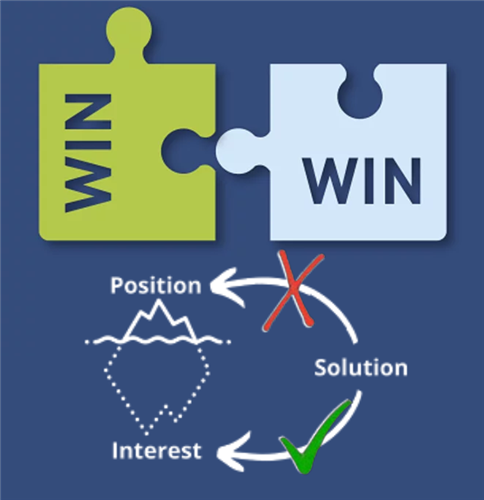

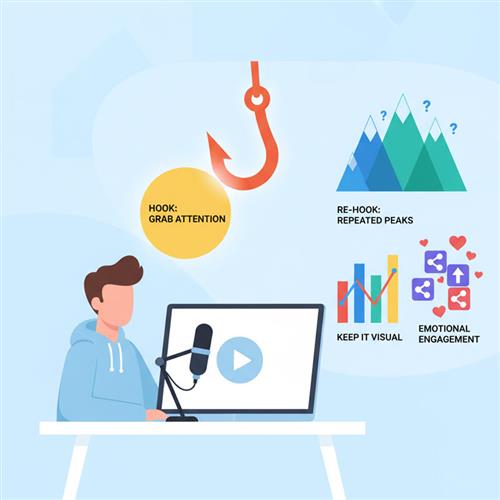


![Best IT Outsourcing Companies in Vietnam with Reviews 2023 Top 10 Vietnam IT Outsourcing Vendors [MOST UPDATED] - TIGO CONSULTING](/Uploads/Vietnam12012023111455_thumb.jpg)
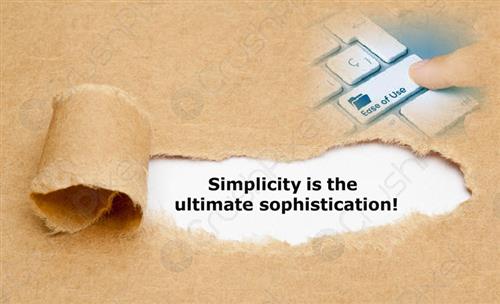
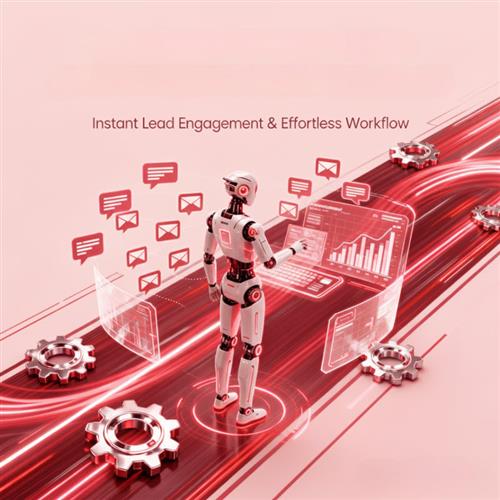

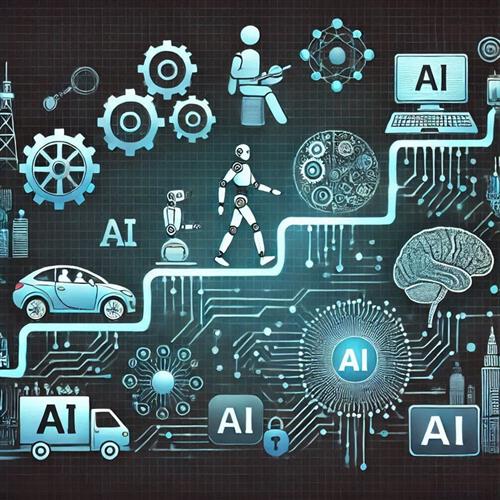
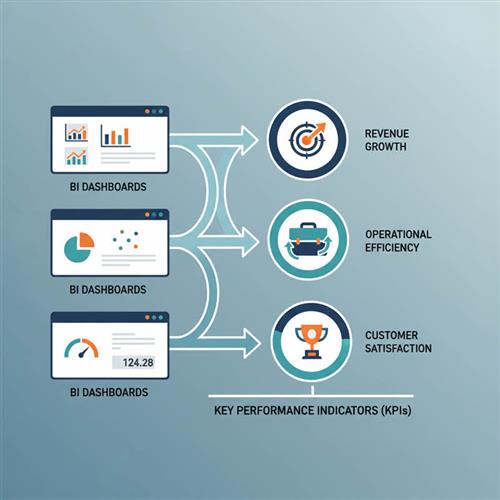
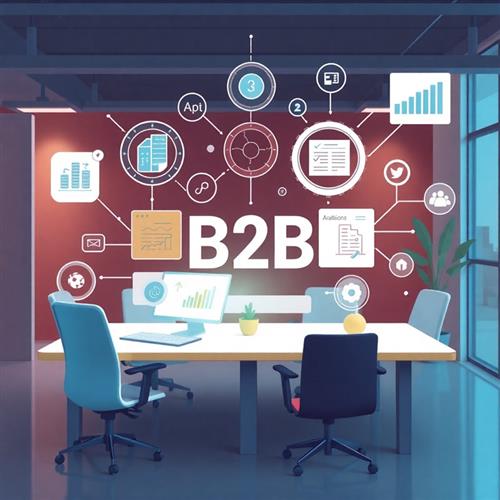
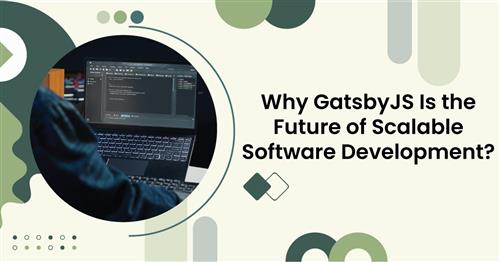
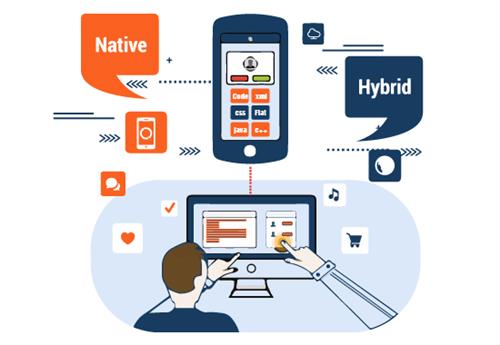
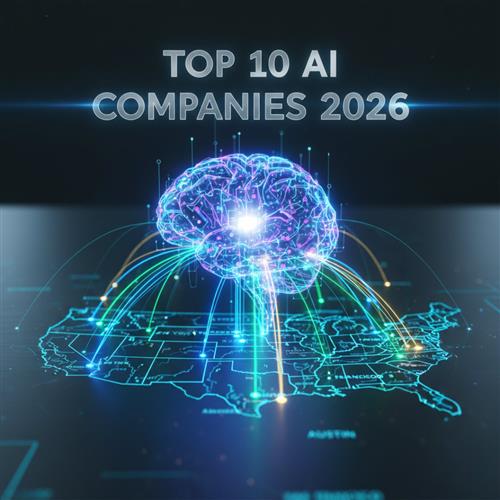









 Link copied!
Link copied!